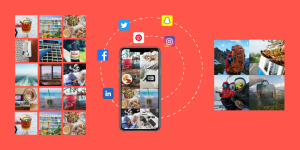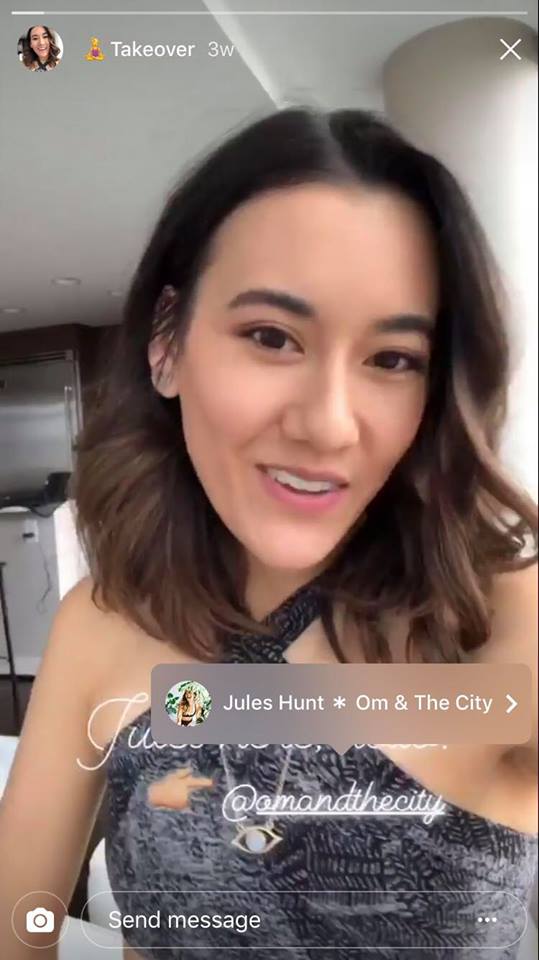Organizations around the world are starting to implement company-wide employee advocacy (EA) and employee-generated content (EGC) programs. But even the most savvy professional can struggle with transforming the employee experience using social media. Here are some of the questions they’ve asked us about employee advocacy and employee-generated content.
What is employee-generated content?
Employee-generated content is a photo, video, social post, or article shared by a current, former, or prospective employee about a brand or its company culture.
You can learn more about employee-generated content in our comprehensive guide.
How can we get employee-generated content if our employees do not use social or are hesitant to share company content on their personal accounts?
Aversion to social media or hesitancy to use their personal accounts is not a major obstacle to getting amazing employee-generated content. You should always provide multiple channels for employees to contribute. This could be “off-network” like email, SMS, Slack channels, internal message (BBS) boards, or even a shared folder on a communal drive.
Once you have a collection process in place, you can start trying to understand the reason people are not on social or do not like sharing company content. It could be generational issues. It could be a work-life balance concern. It could simply be fear of posting the wrong thing and getting reprimanded.
Taking the time to diagnose the cultural concerns will show your teams that the employee advocacy initiative is not just about content creation and distribution. It is part of an effort to be inclusive, innovative, and provide opportunities for all staff to contribute their voice to the brand narrative.
What is the best way to collect employee-generated content?
The first question you should ask yourself is, “what am I trying to accomplish with these employee experiences?” The answer to this question will help guide the collection channels for your employee-generated content.
Often, the easiest way to collect content is by creating a dedicated email, slack channel, SMS number, or microsite where employees can submit content. Many organizations have found that deploying a tool, like TINT, significantly helps with the collection, organization, and reuse of content.
Sometimes, the best employee-generated content lives off-site. This could be company reviews from current or past employees on job sites like Glassdoor.
Be specific when asking for content to ensure that it aligns with your needs. Then leave enough room for employees to be creative.

What is your best tip to get employees on board with advocating for their company?
The best way to get employee buy-in is to make the contribution meaningful. Help employees understand why they are advocating for the company and how their contributions are being used. The best employee advocacy initiatives are strongly rooted in company culture. Those brands and organizations with a strong culture will find the easiest path forward.
If there is not a cultural component to lean on, then share specific outcomes that are expected from the employee advocacy program. Some staff will always prefer the hard numbers to fluffy cultural pieces. How much time will it take? What is expected of people? How will it help with recruitment, retention, sales, or branding? How will success be measured?
Beyond that, make the process easy. People will immediately lose enthusiasm if it is difficult to participate. Tools like Hootsuite Amplify make it easy for employees to safely share your content and extend your reach.
What are some of the reward ideas for employees who become ambassadors?
Start with simple and easy rewards. Give shoutouts and public accolades to employees who consistently share. Gift cards and branded swag is often an effective incentive. Then, as you develop champions across departments, get their feedback on what would be good big-ticket rewards. These could be things like technology (airpods, microphones, or speakers), experiences (meals, travel), or opportunities (conferences, other professional events).
Harvard Business Review shares that “a little recognition can provide a big morale boost”. There are plenty of effective non-monetary motivators that can be implemented as part of your rewards system.
How can the organization maintain a unified voice with multiple content publishers not in the marketing or communications department?
Employee-generated content is a content creation and brand-building tool. It does not mean that all employee content gets automatically distributed to all channels all the time. As content comes in, marketing and communications still play an important role in the distribution process. Rather than spending time creating content, these professionals get to spend (less) time selecting the best pieces of content, essentially passing them through the lens of the brand before the content goes public.
As more and more employee-generated content, and other externally-generated content, is produced, it is the role of the marketing team to deploy technology that will expedite the process. TINT Attention Score gives you a look behind the eyes of your audience to ensure that your content is attention-grabbing before it is published.
Do you ever worry about UGC or EGC posts being on-brand (appropriate and high quality)?
It is okay for UGC or EGC to be less than perfect quality. If anything, that shows that the content is authentic. The TINT State of User-Generated Content Report 2022 and Hootsuite Social Trends 2022 report shows that consumers are increasingly skeptical of marketing content. They do not trust overly photoshopped or manipulated photos.
Consumers want to see the rough edges. They want to know what the real experience is buying, engaging, and working with a specific brand. That gives you permission to have a photo that isn’t perfectly centered or has a slightly soft focus.
That doesn’t mean sloppy is permitted. It means authenticity should take priority over polish, and incorporating non-brand voices should become a cornerstone of your marketing efforts.
How do you recommend small businesses promote employee-generated content, given that there are so many fewer voices to be shared?
Launching an employee-generated content initiative may actually be easier in a small business. There is less bureaucracy and organizational inertia, allowing you to move quickly and iterate as necessary.
Don’t overcomplicate it. If you have a small team or are working in a small business, then lean on the technology that is available. It is likely that everyone has a mobile phone. Let employees text photos of interesting happenings to a dedicated number. Give specific guidelines for the types of content you’re looking for.
Having fewer voices also means that your customers can build connections with you and your staff in ways that would be much more difficult at a larger company. Spotlight the bartender who is mixing drinks this week or the chef who created the special. Share the people who make the business possible and give a peek behind the scenes. You’ll quickly discover what content works, then you can provide additional guidance to source more of that type of material.
How do employee advocacy and employee-generated content fit into governmental, municipal, or civic marketing and communications?
First, always think about the outcomes you’re seeking. Governmental employee-advocacy typically falls into two broad categories: amplifying messaging and sourcing content.
Amplifying messaging can be a little tricky, particularly as many public information officers have started to use personal social accounts to echo the messages they’re disseminating to public channels. This is where a tool like Hootsuite Amplify is likely going to provide enough guardrails to ensure that staff messaging is accurate and appropriate
Sourcing content is an exciting opportunity that governmental agencies are starting to awaken to. You have a massive community to collect content from; not just employees but citizens.
Finding the right hashtags and geotags for your community is a useful first step. You can also run contests or other social gamification to drive content creation. Then, start sharing this community-created content across your social channels.
Can employee-generated content be created in an entirely virtual workspace or work from home model?
Yes. The lack of a physical office doesn’t mean that your team can’t be part of a social conversation. If anything, encouraging them to create content can strengthen their connection to the company and showcase the value of remote work culture.
A great example is Cisco. While employees transition to work from home, their social team created new content opportunities using #WeAreCisco. Their content shifted from highlighting the happenings of their global offices to showcasing how their technology empowered people to work from anywhere. This content strategy drove a 28% increase in blog views and a 42% increase in new visitors to the #WeAreCisco blog.
How Cisco uses EGC to amplify culture narrative, engage employees, & attract new talent
How do you let associates and frontline employees know it is okay to share or create content as part of their job?
Content empowerment comes from the top down. Start with encouraging content from leadership. Then find champions who will be shining examples of internal creators. There is always a little inertia to starting the employee content engine. But that will fall away as frontline staff start to see others in similar roles celebrated for their contributions.
How do I encourage content creation in a multigenerational workplace where people have strong preferences on social platforms (or lack of social)?
With the vanguard of Gen Z graduating college and entering the workforce many companies may have four generations present in the workplace. This may lead to disagreements or frustration around what platform to emphasize for your employee advocacy and employee-generated content initiatives.
The best solution is to provide multiple channels to submit and distribute content. Text messaging, SMS, and email are effective content submission channels for the socially averse. Branded hashtags and lists are available for the socially active.

TINT helps organizations collect employee-generated content to enhance recruitment, retention, and engagement. See why internal communications and HR teams choose TINT.
What’s the best way to facilitate an intern or junior staffer social media takeover?
Intern or staff takeovers of social platforms can be great ways to give authenticity to your social presence and provide a look inside of a company.
First, be sure to spend time promoting the takeover. Build excitement and anticipation for the takeover. This should be at least a week of advance lead time.
Then, spend time planning what the takeover will look like. The best takeovers have the feel of spontaneity, but there should be enough structure to the day that the narrative of the takeover make sense. It should not be overly scheduled, but there should be “milestones” like speaking to certain staff, going to lunch, an office tour, AMA, and a happy hour.

Finally, cross-pollinate the content. The live can go out through Instagram, TikTok, or other platforms. Was there a great talk about your product? That could be a clip that you reuse elsewhere. Did they interview the CEO or a company leader? That could also be repurposed. Think about different ways that the takeover can be used to create content that contributes beyond the single day.
Who are the best people to have on an “employee social council” or other employee advocacy group?
It is best to start with two or three key stakeholders. In larger organizations, this will often be representatives from marketing, human resources, and internal communications. Once the structural members are in place, you can begin adding departmental champions to the committee.
Keep the committee small for the first few iterations of your employee advocacy program. Sometimes, too many voices can “committee” the initiative to death. Start with the smallest possible group that is able to make meaningful progress, then grow organically as the program develops.
Do you believe employee-generated content is applicable to any demographic and industry?
Yes. Regardless of industry, marketing and communications teams are expected to service more channels with more content, often with less staff. Brands are focusing on omnichannel marketing, and that requires a significant investment in content.
Outsourcing content creation can be expensive and requires extensive guides so that the content received aligns with brand voice and perspective. Instead, consider looking inward to the people who are most familiar with your brand; the folks who work there. With the proper motivation and incentivization, there will be a wellspring of ideas and content.
Brands using employee-generated content currently include telecommunications, energy, nonprofit, governmental, professional, culinary, creative, and more. There is a high possibility that a brand in your industry or space is already running some sort of employee advocacy or EGC initiative. Check out our case studies for some creative examples from many industries.
What is the best way to streamline how employees submit content for social?
The best way to streamline the employee content submission process is to implement a technology solution that will help collect content from multiple sources, curate that content, make it easy to sort and display, and analyze content quality. TINT makes employee-generated content easy with multiple tools and integrations designed with marketing and communications teams in mind. Logging of submissions and terms of service opt-ins will keep your human resources team happy too.



